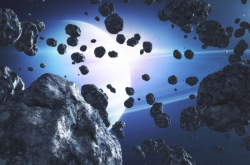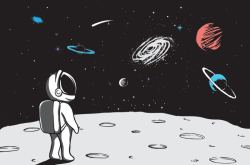Elena Bykovskaya, a senior lecturer at ITMO’s Faculty of Energy and Ecotechnology, spoke about how to live a sustainable life by maintaining critical thinking and without becoming fanatic, and Mikhail Kotov, a science journalist and popularizer of astronautics, explained why people don’t travel to the Moon anymore and what space programs are now indispensable. ITMO.NEWS put down the highlights.
Healthy ways to help the planet
In early December 2020, the scientists from the Weizmann Institute of Science reported that global man-made mass exceeds all living biomass. The researchers estimated that roads, buildings, cars, computers, and everything else that we currently produce and use weigh more than the biomass of all plants and animals on Earth.
In their research, scientists compared the weight of biomass (excluding water) with that of all solid objects that humans have created since 1900 and continue to use to this day. Over the past 120 years, the anthropogenic mass has increased rapidly – doubling approximately every 20 years – in contrast to total biomass, which has not changed as markedly (although heavily affected by deforestation, afforestation, and other factors).
If in the early 20th century the human-made mass was only 3% of the total dry biomass, in 2021 (give or take six years) it will reach or even exceed this figure. The increase of the anthropogenic mass will lead to a decrease in biomass. As a result, this can easily tip the balance that is vital for preserving biodiversity on the planet.

The good news is that it is in our power to make the change. Today, more and more people are concerned about waste sorting, conscious consumption, plastic-free life, and eco-friendly habits – but it’s not as easy as it may seem.
For example, many are moving away from buying plastic bags in favor of seemingly greener paper bags. The production of one such package requires, in turn, far more resources, including natural ones, and paper doesn’t decompose properly in the conditions of ordinary landfills. So, it is a disposable and environmentally damaging product just like regular plastic.
At first sight canvas or string bags only have benefits: they are all-natural, can be easily laundered, and will serve you for a long time. The production of cotton, however, is considered one of the world’s most polluting industries.
Cotton is the backbone of the entire fashion industry. That’s why manufacturers are doing everything for good harvests and make use of various chemical means: insecticides, pesticides, and herbicides. As for water consumption, – it takes around 3,000 liters of water to produce just one T-shirt. Let alone the fact that cotton is still picked by hand and it is hard work, which often involves violations of ethical norms and even human rights.
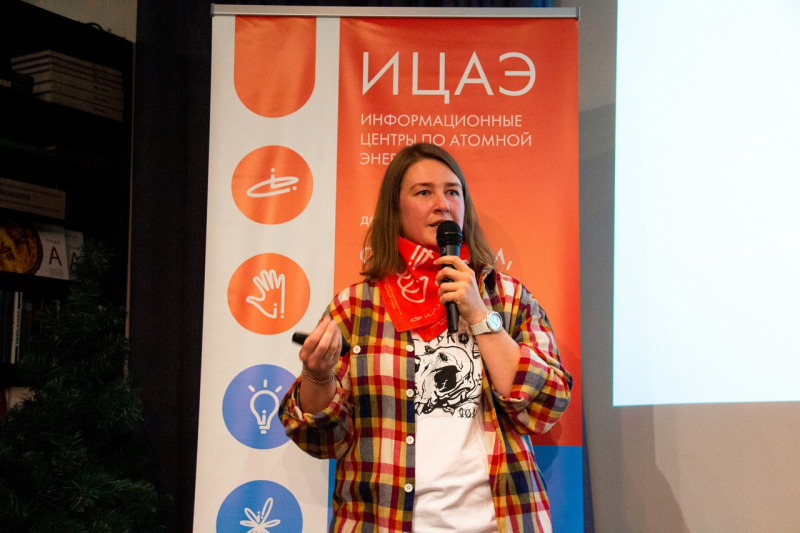
Selecting goods
Before selecting goods, you need to ask yourself some questions. Do you really need this product or you can replace it with something you already have? How long will it serve you? And how was this item produced? Who are the manufactures? And does its production involve ethics violations, namely, animal testing or unfair trade?
In case the product is not in line with your new principles, it doesn’t mean you have to get rid of it right away. It may not be a good idea to throw away your leather shoes or bags; it is better to let them continue to serve you well.
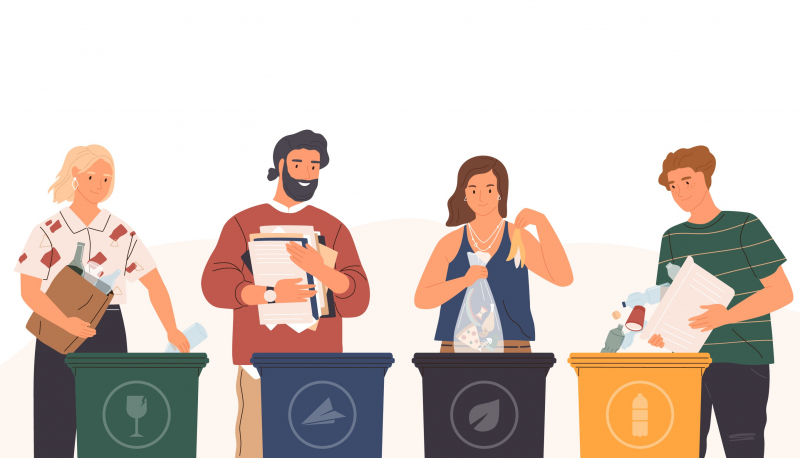
Avoiding risks and pitfalls
This is where critical thinking and analytical approach will come to the rescue. There is something called greenwashing – a superficial or insincere display of concern for the environment that is shown by organizations. Some brands mark their products with green symbols and take pictures of them in the grass so that people would think that they are green. So do manufacturers of cosmetics and foods – they add meaningless inscriptions, namely, Eco, Natural or Organic to their products.
There are, in fact, real eco-labels that confirm that the product has gone through many iterations in laboratories and verification by commissions. There is no need to learn them all by heart, you can simply use an app called Ecolabel Guide, which allows you to scan the package and get all the relevant information on labeling.
Making sure your actions are valid
How can you make sure that donated batteries are not buried in soil and separately collected garbage is recycled? You can find all the information about your recycling in the instructions on waste containers, companies, or on the website of the Separate Collection movement.
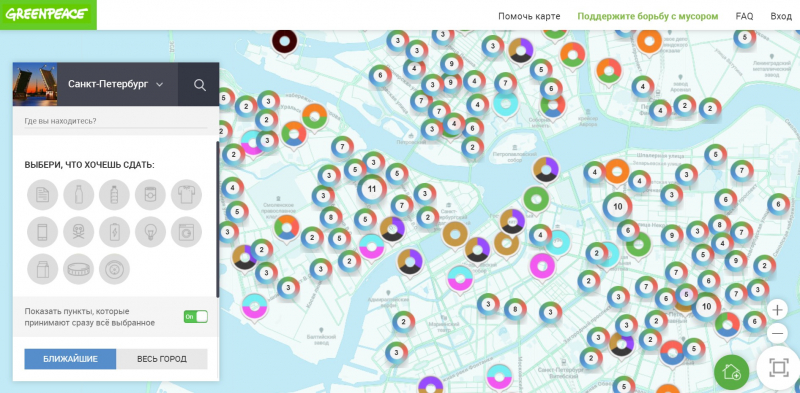
Tracking the entire chain is quite simple. Although all information should be free, each region has its own peculiarities. The batteries are indeed recycled. There are such enterprises in St. Petersburg, Chelyabinsk, Yaroslavl, and Novosibirsk. They also contain valuable metals that are then sent for remelting, and the part that can’t be processed is neutralized and utilized without any harm to the environment.
Of course, there are many problems with the processing of raw materials. Firstly, not all residues can be used. So, the electrolyte powder that remains after recycling batteries can be a valuable resource as it contains manganese and zinc – but no one has yet figured out the way to extract these elements.
Secondly, companies require a great deal of raw material to really start making money on processing. It is not yet profitable for major converters to cooperate with individual schools, educational institutions, or activist groups. For the same reason, they prefer to take the waste paper from such large suppliers as publishing houses and polygraphic productions. The processing market in Russia is only now starting to grow and still falls far short of that of China.
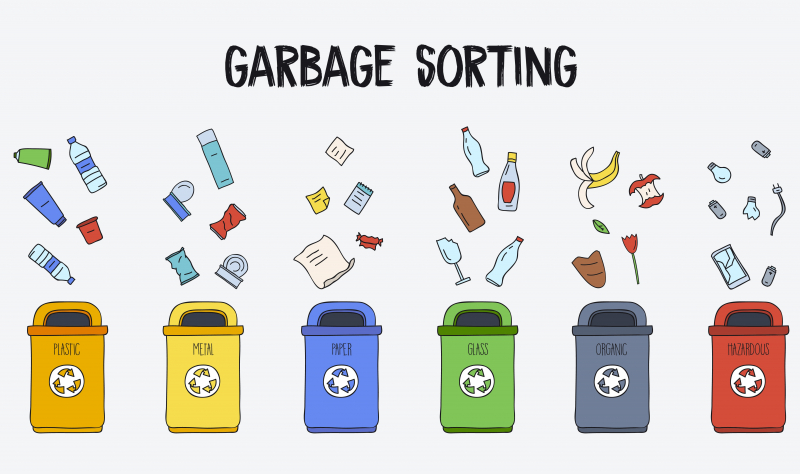
Communication between people and government
Another matter for all novice eco-activists is the interaction with public entities. There's nothing more important than having a proper conversation, which follows ethical norms and the country’s laws. You can find all the information online: what to do if a tree is being cut down in your yard or if you want to place a container for separate waste collection. There is also a broad choice of teaching materials and even courses on ecoactivism. For instance, the Teplitsa of Social Technologies project (Теплица, a greenhouse in Russian - Ed.) has recently conducted a course on this topic.
It is very easy to become obsessed with the idea. To avoid this, you have to accept that this is the way the world is, and we don’t have to fight it but try to make an impact. There is no need to leave your ‘past’ life behind, move to a forest, live in a hut, and start hunting and gathering to keep yourself alive. This is not necessary and hardly possible as you still need communications, transport, and so on.
The contribution of each and every one of us is important. At first, just a couple of people start to turn off the water while brushing their teeth, then someone follows their example, and so on. That’s how – many a little makes a mickle – we can save over billions of tons of water in just one day.
Sadly, it’s impossible to influence the thinking and behavior of all people at once but you can set an example for your relatives, friends, and neighbors. However, you have to enjoy what you do in order to inspire others. That’s why it’s better to grow comfortable with your new eco-friendly habits and not to overplay your hand. A sustainable lifestyle should bring joy, not stress and irritation.
Balance in astronautics: expectations vs reality
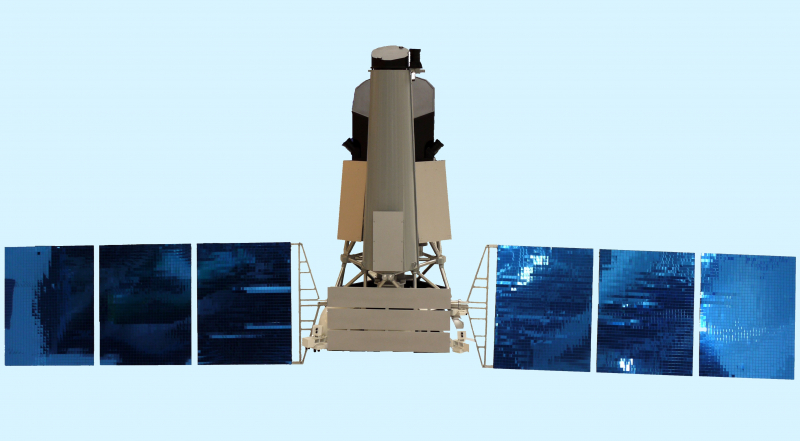
Two Russian projects were launched around the same time. The first is Spektr-RG, an X-ray observatory with two telescopes, which is located far away from the Earth – at the L2 Lagrangian point –, and creates a map of the entire sky. It has helped to find several million X-ray sources and dozens of scientific papers in the field of cosmology have been written based on these results. This research allowed scientists to look into the mysteries of our galaxy and universe. However, most people still haven’t heard about this project.
On the other hand, another project called the FEDOR robot is quite popular yet absolutely useless. The only reason why FEDOR got to the International Space Station was that Roscosmos needed to test a new spacecraft from the Soyuz series and had to fill in the last space.
So, there are two missions: one has the highest scientific value but no one knows about it, because it is not interesting, and the other is on everyone's lips, simply because it is a robot.
When editors ask me to write an article, the first thing they ask is: is there anything about traveling to the Moon? For some reason, most people are interested in this particular topic. Everyone is literally obsessed with the idea of conquering the moon and building bases on it. And as such national space agencies as NASA, Roskosmos, or CNSA are funded by the people’s taxes, they seem to have a voice in this conversation.
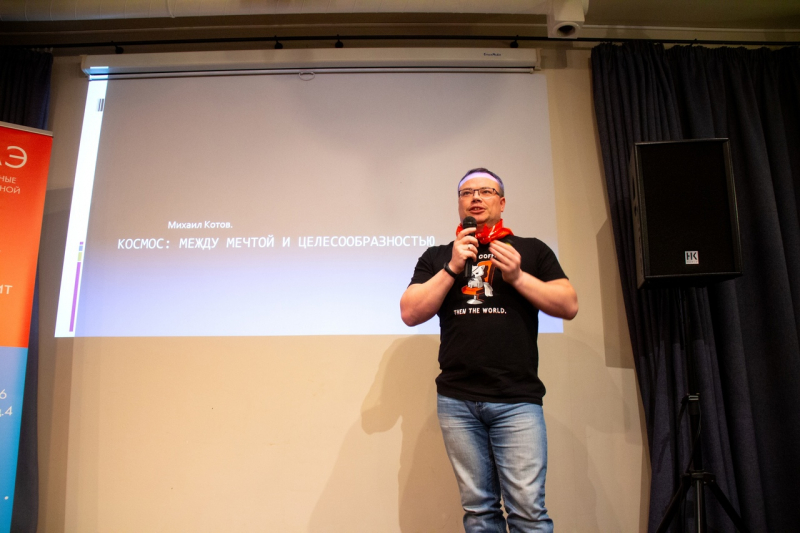
In fact, a new moon race really started just a couple of years ago. China was the first to announce its plans to send its astronauts to the Moon by about 2028. Less than six months later, the former US Vice President Mike Pence called on NASA to land Americans on the Moon by 2024.
Of course, this plan is totally unrealistic but the US space programs have a funny tendency: they change radically with each new president. So, most likely, Joe Biden will have completely different priorities.
The main reason why a human has not set foot on the Moon for more than 50 years lies in the cost of such flights. The American super heavy-lift rocket SLS has been under development since 2021 and now it has a value of 35 billion dollars. The vehicle, however, is not a breakthrough but a project of the Ares series.
But the rocket is not the whole story, it needs a command module, a descent module – which so far none of the countries participating in the space race has – and spacesuits, costing a budget of about 500 million USD. Even for space flights, this is enormous money. The annual budget of Roscosmos, by comparison, is about one and a half billion dollars.
And it is even harder to figure out new ways to use rockets, besides, space missions, there are simply no other rational ways to use such large vehicles other than going to the Moon.
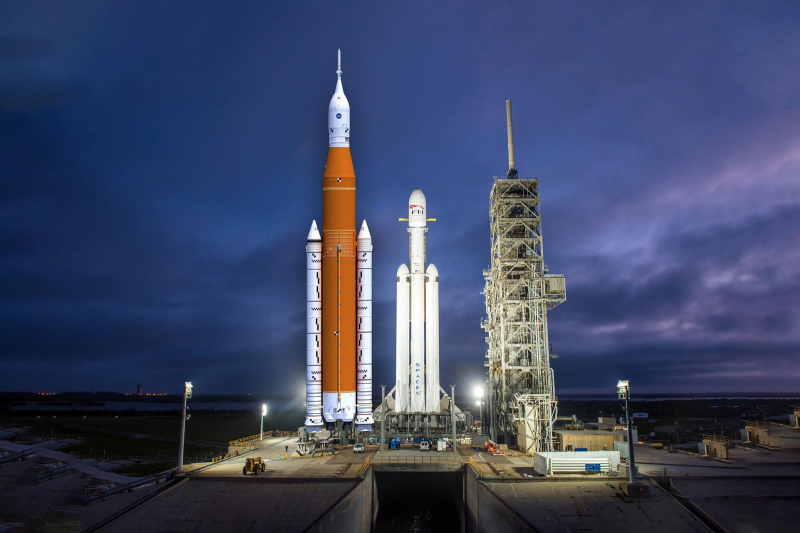
Practical vs awesome
Is there at least one space exploration mission that is both scientifically important and interesting? Yes, there is. This is a Chinese mission on returning the soil samples to Earth with the help of the Chang'e-5 spacecraft. At the moment, it is one of the most technologically complex space missions in the history of humankind.
Its apparatus and mechanism have a very complex structure. When approaching the Moon, the device split into two parts: the command module remained in orbit, and the lander landed on the surface, took a sample into a special capsule, and sent it back into orbit, where it automatically docked to the command module and went to Earth.
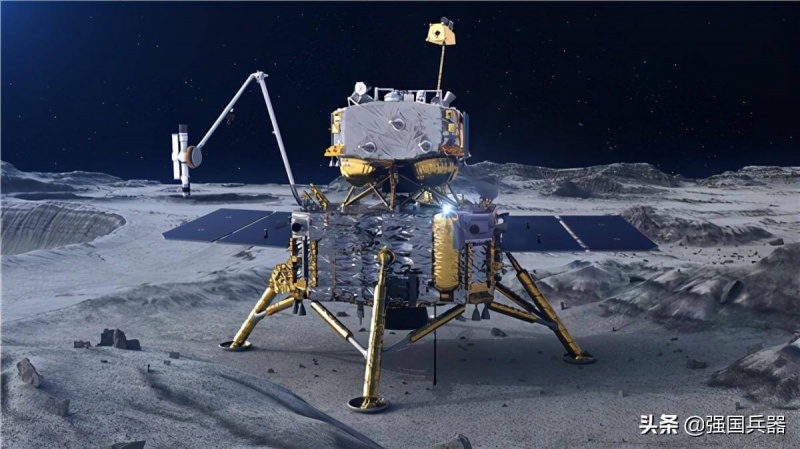
Until this point, no one outside the Earth’s orbit had performed such complex operations in an automatic mode. As a result, the Chinese spacecraft collected almost two kilograms of regolith, which is ten times more than the USSR did in the ‘70s. A special laboratory was built for soil analysis and each country could ask the Chinese government for a certain amount of the sample to study it independently.
What are the real intentions of the Chinese government and CNSA? This project let them kill two birds with one stone: they developed a new, more efficient technology for space flights, tested the automatic docking mechanism (they plan to use all this in further manned space missions), bring a record amount of soil for study and demonstrate their capabilities to the whole world. The common module, which delivered the capsule with lunar soil, by the way, almost immediately headed back into space as part of new missions.
This proves that space missions can really be spectacular and mesmerizing, attract the world's attention, and at the same time solve specific issues of science.



